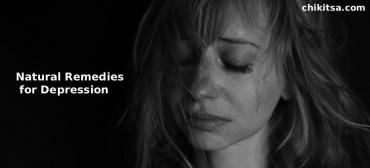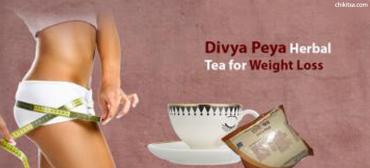11 Effective Home Remedies For Cervical Vertigo

Each one of us may have experienced dizziness at some point in our lives. Dizziness is a frequently used word by lay-persons to explain an unpleasant sensation of lightheadedness or vertigo. It affects about 66% of the general population each year. Dizziness does not define the cause behind such a feeling. It could range right from plain hypoglycemia or low blood sugar levels, disturbances of vision or inner ear or the gastrointestinal system. Cervical vertigo is a quite distinct term in definition as well as the appearance of signs and symptoms and its causes.
What is Cervical Vertigo?
It is vertigo originating from the cervical spine. Similarly, cervicogenic dizziness is a term used to describe dizziness that arises from the cervical spine. Vertigo, per se, is a subjective sensation of moving or spinning of surroundings. Vertigo itself is not a disease. It is a symptom which reflects an underlying actual disease or clinical condition. Although cervicogenic dizziness is considered to be a distinct disorder, it is not yet clear if cervical vertigo can be considered a separate clinical entity. Neck movements are also associated with head movements.
In a study conducted recently, to investigate the causes of vertigo, it was found that about 65% of cases were due to cervical spondylosis. This is because neck receptors are responsible for maintaining and controlling movements of the eyes and the body.
Signs and Symptoms of Cervical Vertigo
The most commonly observed signs and symptoms of cervical vertigo are
- Dizziness or vertigo often associated with a headache
- Imbalance while standing or walking
- Neck pain with postural imbalance
- Neck pain referred to the shoulders
- Hearing loss or Tinnitus (ringing sounds in the ear)
- Swimming Sensation to explain lightheadedness or a sensation of floating
- Nausea and occasionally vomiting
Causes For Cervical Vertigo
- Whiplash injuries or trauma. A study conducted found that whiplash injuries caused persistent dizziness or vertigo.
- Cervical spondylosis
- Cervical muscle spasm
- Degenerative cervical spine diseases
- Abnormal nervous input into the vestibular nucleus from the upper cervical region
- Occlusion or compression of the vertebral artery
- Migraine-associated vertigo. In a study carried out, it was observed that about 65% of adolescents with a migraine experienced shoulder pain and cervical pain.
Diagnosis of Cervical Vertigo
It is important to rule out other causes for dizziness before diagnosing a person with cervical vertigo. Benign paroxysmal positional vertigo or BPPV is often misdiagnosed as cervical vertigo. Reproducible vertigo by manipulation of the neck and pain on palpation of sub-occipital region and muscles of the neck, chest, and back are the only examination findings in patients having cervical vertigo. A CT angiography is required to differentiate cervical vertigo from rotational vertebral artery syndrome.
Digital Subtraction Angiography (DSA) is an invasive investigation procedure to diagnose cervical vertigo in high risk cases. Cervical vertigo may also be present for days to weeks after having a neck injury. Yet, the patient may feel pain only during the examination. Since there are no definitive tests or “gold-standard†tests designed especially for cervical vertigo, it is difficult to diagnose it.
Home Remedies For Cervical Vertigo
To manage cervical vertigo, it was suggested that guidelines for treating cervical spondylosis were to be followed. Methods used for treating cervical vertigo vary from person to person depending upon the therapy required. Vestibular therapy along with manual therapy is often used to treat cervicogenic dizziness. Other methods of treatment like mechanical traction, neck muscle strengthening and active and passive range of motions, postural education, massage and cervical kinesthesia training are often used to manage signs and symptoms of cervical spondylosis and cervical vertigo. Muscle relaxants and soft neck collar are prescribed after an acute injury or spasm.
Some home remedies make it easier to manage signs and symptoms of cervical vertigo and give quick relief from cervical spondylosis.
- Regular Yet Gentle Exercises of The Neck: This includes forward, backward and side to side movements of the neck. This reduced pain and stiffness around the neck. This neck exercise should be practised more frequently by persons who sit in one place for long durations.
- Other Exercises – Brisk walking for about 30 minutes, swimming and cycling improves general circulation.
- Shoulder Exercise – Shrugging up and down and rotator movements of shoulders help to improve blood circulation. If you experience pain from any of these exercises, you need to stop immediately and consult your clinician before resuming them.
- Hot and Cold Fomentation – Hot compression reduces muscular swelling and soreness. Cold compression on the other hand reduces any kind of muscular inflammation. Hot fomentation should not be applied on inflamed and red or irritated areas. Sun light s the best form of hot fomentation.
- Epsom Salt – Also called Sendha Namak in Hindi. Make a thick paste out of the salt by mixing a small amount of water. Apply this paste over the affected or painful area and keep it for about 15-20 minutes or put Epsom salt in a bathtub of warm water and soak in it. Epsom has magnesium content in it which neutralizes the pH of the body. It is also a good remedy to reduce stiffness and inflammation.
- Garlic – This home remedy is anti-inflammatory and a painkiller too. Garlic is also known to improve general blood circulation. Eat 2-3 cloves of garlic on an empty stomach each morning. Or heat 3-4 cloves of garlic. Crush them, let them cool and apply over affected area.
- Sesame – This home remedy is loaded with magnesium, calcium, copper zinc, vitamin D, vitamin K and phosphorus. Sesame oil can be heated and applied over affected part or it can also be used along with lavender oil for a soothing effect.
- Turmeric – This age old kitchen remedy is anti-inflammatory in nature and it is also known to improve blood circulation. Another variant of turmeric is aami haldi. A paste made out of this and applied locally gives relief from swelling and inflammation. Turmeric can also be had along with milk at bedtime.
- Gingko Biloba – A lot of research is being done on the effectiveness of this plant in managing vertigo. This plant is rich in anti-oxidants. Although there have been researches which prove its effect on vertigo due to vestibular defect, some individuals have also shown allergic reactions to this plant. It is also not advisable to use this plant if you are pregnant or lactating.
- Apple Cider Vinegar – This is a proven magic remedy for almost any kind of disease. Apple cider vinegar has alkaline properties which neutralize the pH of the body. It is also anti-inflammatory in nature. ACV can be applied locally by soaking it into a warm towel. Or mix about 3 cups of apple cider vinegar with water in the bathtub and soak yourself into it.
- Neem – This is anti-inflammatory and a potential pain reliever. Crush neem and make a paste out of it. Heat the paste and apply it to back or neck.
Things To Avoid
- Avoid sitting in one place for a long period of time. Move around after every hour or so.
- Avoid foods having caffeine. These can make you dizzier.
- Avoid extreme and jerky neck movements.
- Avoid alcohol and smoking.
- Avoid sugar and acid-forming foods.
- Avoid massages if there is any swelling, spasm or inflammation. It can further increase the pain instead of relieving it.









